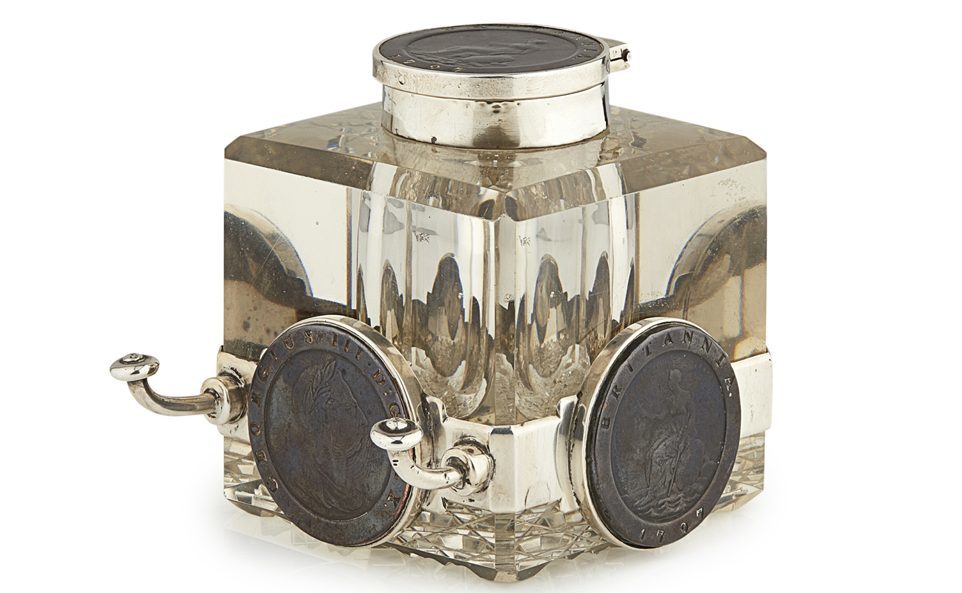THERE IS a multitude of inkwell enthusiasts – indeed a Society of Inkwell Collectors with roots back to 1981 – and no sign yet that the finest are falling in value.
Curious examples also take top dollar – and the monetary reference here is intended.
Lyon & Turnbull’s sale of jewellery and silver in Edinburgh on Wednesday includes the unusual late Victorian silver mounted inkwell illustrated.
The inkwell is hallmarked for Harris and Sons, London and dated 1898.
According to the catalogue description, its facetted block base has a hinged lid inset with a 1787 cartwheel penny, the three sides similarly adorned with coins, with a delightful pen support to the front.
Issued as the first copper coin of the rein of George III, the penny was stuck by James Watt and Matthew Boulton at the Soho Mint, Birmingham (actually in 1797). It weighed a full one ounce (28.3g) with a diameter of 36mm, and proved rather heavy for the pocket.
Watt and Boulton also used their steam-powered coin presses to make twopenny coins in 1797. These coins weighed exactly two ounces (56.7g), making them the heaviest British coins for ordinary circulation.
The large size of the coins, combined with the thick rim where the inscription was punched into the metal rather than standing proud of it, led to the coins being nicknamed ‘cartwheels’.
These great coins were issued to address a shortage of government-issued small change in George III’s reign. This is why tradesmen issued tokens at this time. In Dundee in the 1790s, for example, Fanny Wright’s merchant father James produced a range of tokens bearing scenes of the town. I’ve come across examples with impressions of the Trades Hall, Dundee Royal Infirmary, Dudhope Castle and the Old Steeple.
Due to their size and strength, considerable numbers of copper cartwheels have survived. At least one acts as a paperweight in my house.
Unusual and sure to attract admirers, the L&T inkwell is estimated at £200-£300. I fancy it will interest numismatists as well as inkwell collectors, and the hammer will remain raised beyond pre-sale hopes.
By the by, I have seen ‘cartwheel’ coins used in kitchen scales and on a vesta box, but never on a table inkwell!










